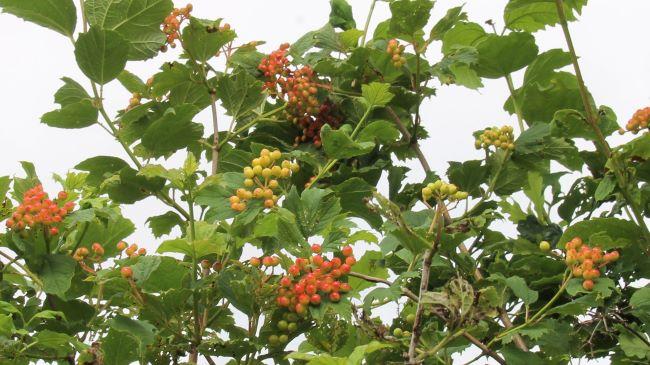
The colourful and fragrant guelder rose
Continuing our quest to highlight some of the native trees growing in the Heart of England Forest, we put the spotlight on the colourful and fragrant guelder rose. The brilliant white flowers of the guelder rose have adorned hedgerows over recent months, and its vivid red berries will bring a splash of colour to the woodland from August onwards.
A tree or not a tree?
Despite the ‘rose’ in its name, the guelder rose is not a rose or a tree at all, but a deciduous shrub that is a member of the Moscatel family that includes other viburnums and elders. Becoming increasingly popular as an ornamental garden plant, it rejoices in a number of different names, including dogberry, water elder, cramp bark, European cranberry bush or snowball tree.
Although a native of the United Kingdom, the guelder rose takes its name from the Dutch province of Gelderland, where it is known locally as the snowball tree. It can be found across Europe and Asia.
With its grey, hairless stems, the guelder rose can grow up to four metres high and spread as wide as five metres. Preferring neutral or calcareous soil it can often be found in damp spots along riversides, among scrub or old hedgerows. Its three-lobed leaves (sometimes confused with those of the maple), with coarse, serrated edges and with sparse fine hairs on their underside, change from green to orange-yellow or red in the autumn.
Visitors to the Forest will find the guelder rose along the woodland ride edges. Head Forester Stephen cautions that many of the shrubs may be suffering defoliation as a result of the viburnum beetle larvae stripping them of their greenery throughout the spring. The damage can be compounded in July and August as the adult beetles continue the ‘harvest’.
Mystic mystique
One of the national flowers of Ukraine, where it is known as Kalyna, its red berries are associated with fertility, health and, in Slavonic beliefs, with the birth of the universe. Deeply symbolic in the country, the guelder rose berries appear as a motif throughout Ukrainian culture. The bark of the tree has long been used in herbalism, and is said to aid muscular spasms and ovarian cramps, while Native Americans used it to treat mumps!

A valuable plant
With its canopy providing shelter for other wildlife, the china-white flowers are especially attractive to hoverflies in the summer months of June and July.
While the bright red guelder rose berries can be mildly toxic to humans (although they can be cooked in jelly or jam) they offer a valuable food source for birds, particularly the bullfinch or mistle thrush. In winter, the berries are a favourite food of the waxwings that visit the UK from Northern Europe.
Help the Forest flourish
You can help protect and preserve the woodland for future generations by dedicating a tree to celebrate a new life or in memory of a loved one, becoming a Friend of the Forest or making a one-off donation.



